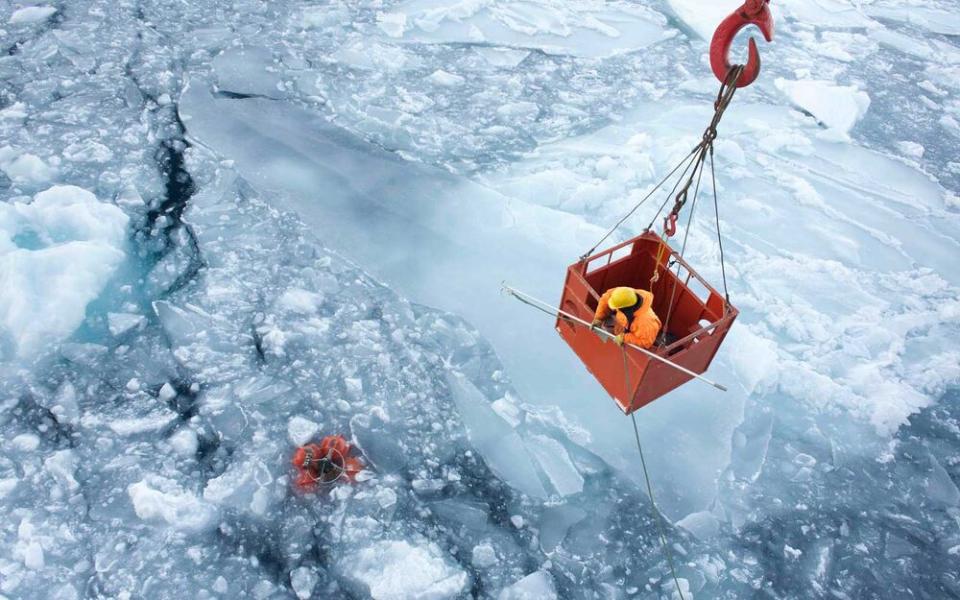Warm Ocean Water Is Causing Greenland’s Glaciers to Melt Faster, According to a Study
Higher air temperatures aren't the only reason glaciers in Greenland are melting.
While the oldest and thickest ice is thawing twice as fast as other ice in the Arctic Ocean, glaciers now appear to be threatened from below as well. According to a study published in the journal Nature Geoscience, Greeland's glaciers are melting at a faster rate due to warm ocean water moving underneath them.
“The reason for the intensified melting is now clear," Janin Schaffer, an oceanographer from the Alfred Wegener Institute in Germany, said in a statement, according to CNN.
The study examined the 79° North Glacier in northeast Greenland. According to researchers, the loss of mass from the Greenland ice sheet currently accounts for about 25 percent of the rise of global sea levels.
Researchers studied a 50-mile-long ice tongue, or “strip of ice that floats on the water without breaking off from the ice on land,” CNN reported.
According to the network, an underwater current bringing warm water from the Atlantic Ocean causes heat to come into contact with the ice, making the melting process faster. The current is more than a mile wide.
A similar current was also discovered near a different glacier in Greenland, CNN reported. In that case, a large ice tongue has already broken off into the ocean.

A separate study published in Nov. 2019 warned that the Arctic could become ice-free in the summers as early as 2030. That prediction came as researchers discovered that older ice — or ice that is more than five years old and measures more than 13 feet thick — is melting, likely affected by ocean currents and atmospheric winds.
Melting ice has become an all too regular occurrence in the last several years, revealing landscapes, plants, and animals that people haven’t seen for thousands of years.

